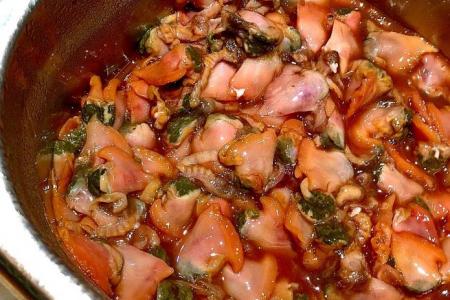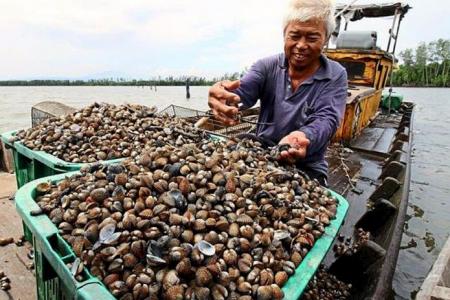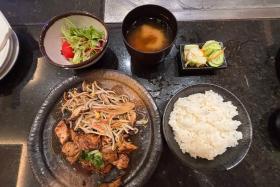A clammy situation for cockle importers
'Si hum' supply harmed by pollution, rising temperatures
The cost of blood cockles, commonly referred to as 'si hum', has gone up.
Local importer and supplier Siong Hong Seafood used to pay $100 for 65kg, but now pays as much as $170.
Its general manager Lee Ya Xiong, 48, told The New Paper that pollution and rising temperatures have led to a drastic fall in Malaysia's cockle harvest.
"We have no idea how to solve this problem," he said.
At its peak in 2005, Malaysia produced 100,000 tonnes of cockles for both local consumption and export.
Only 16,000 tonnes were harvested last year, Malaysian newspaper The Star reported.
One of the issues was the deteriorating water quality in the cockles' breeding environment.
Singapore's live cockle imports from Malaysia dipped from 2,500 tonnes in 2014 to 2,000 tonnes last year, Agri-food and Veterinary Authority figures show.
From January to April this year, 600 tonnes of cockles were imported from Malaysia.
Siong Hong accounts for 70 per cent of Singapore's total cockle supply to local food vendors, said Mr Lee.
So far, Siong Hong has managed to keep the price of cockles affordable for hawkers and restaurants here, at $4 per kilogram.
COSTS
One of Siong Hong's customers, 363 Katong Laksa in Holland Village, said that cockles are slightly more expensive now, but it has yet to pass on the higher costs to consumers as it is still bearable.
"At least we don't have problems getting cockles from the supplier," said outlet supervisor Gina Tang Qin Yu, 43.
The Katong Laksa outlet uses up 18 to 20 bags of cockles each day, with each bag weighing 500g.
Local harvester Ah Hua Kelong has helped ease the cockle crunch.
The kelong harvests about 20kg of cockles twice a month, said its marketing manager Bryan Ang, 27.
"Most of the cockles that we supply locally are those found together with prawns," he told TNP.
Supply has dropped for the kelong located off Changi and Sembawang. But this has been due to heavy rain in recent months.
Pollution affects its production in Malaysia, while Ah Hua Kelong is in the East of Singapore - far away from the affected areas, said Mr Ang.
"Supply is still not enough to meet demand, but we don't want to spoil the environment," he added.
The blood cockle is an essential ingredient in popular local dishes such as char kway teow and laksa, explained Mr Lee. "It can't be replaced with other meats for the delicious taste. It's just not the same," he said.
The company will continue importing as there is still a huge market for cockles in Singapore.
"Besides, we've heard from our sources in Malaysia that the situation in the sea is improving," said Mr Lee.
Harvesting to be disallowed during spawning
Pollution has put Malaysia's multi-million ringgit cockle breeding industry on the brink.
Mr Abu Talib Ahmad, senior director of research at Fisheries Research Institute, told Malaysian newspaper The Star that all three main cockle-breeding states were affected by pollution.
Selangor, Perak and Johor have been affected by the pollution which resulted in high mortality of cockles and spats (young cockles).
At its peak in 2005, Malaysia produced 100,000 tonnes of cockles for both local consumption and export.
But only 16,000 tonnes were harvested last year, in an industry now estimated to be valued at about RM160m (S$55m).
BAN
The Fisheries Department now wants a ban on harvesting during peak spawning season to revive the swiftly falling numbers, reported The Star.
Research carried out by the department, with the support of Japan International Research Centre for Agricultural Sciences, recommended an annual "closed season" on cockle harvesting and permanent sites where harvesting is disallowed completely to allow natural spawning.
It also wants government agencies to step up pollution control as part as an overall management plan.
Get The New Paper on your phone with the free TNP app. Download from the Apple App Store or Google Play Store now



